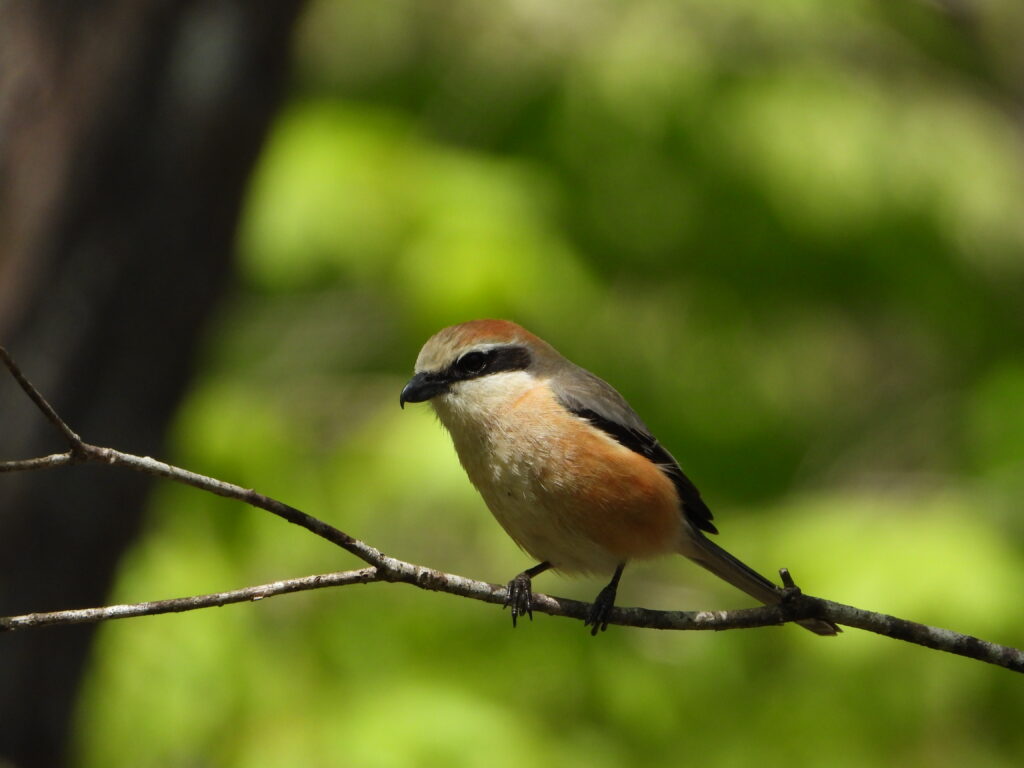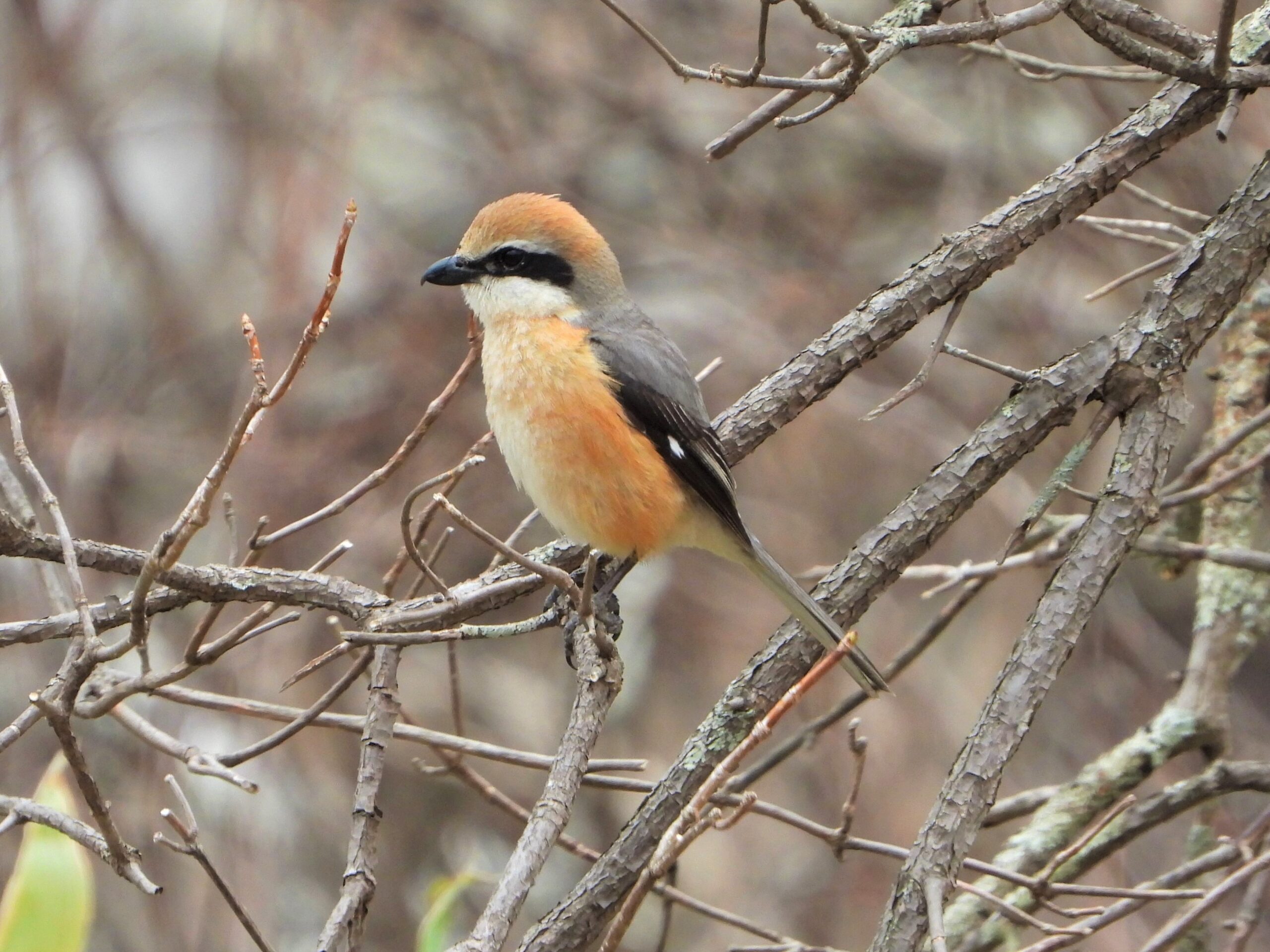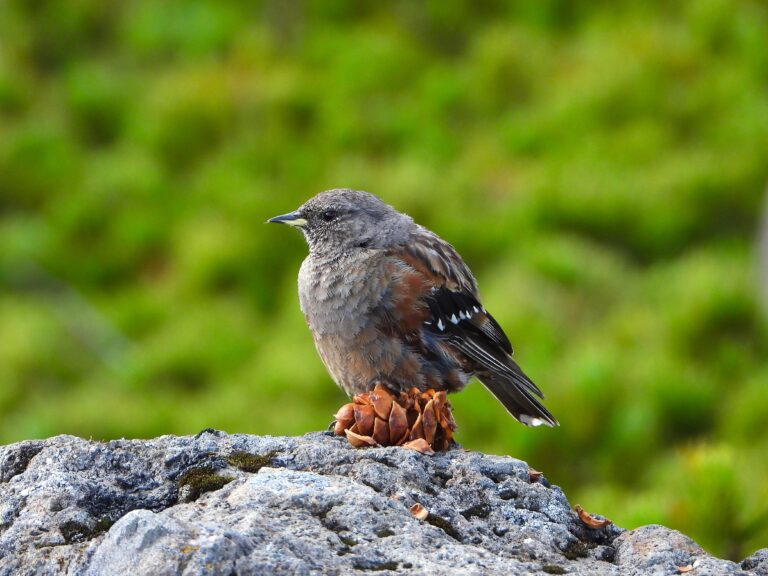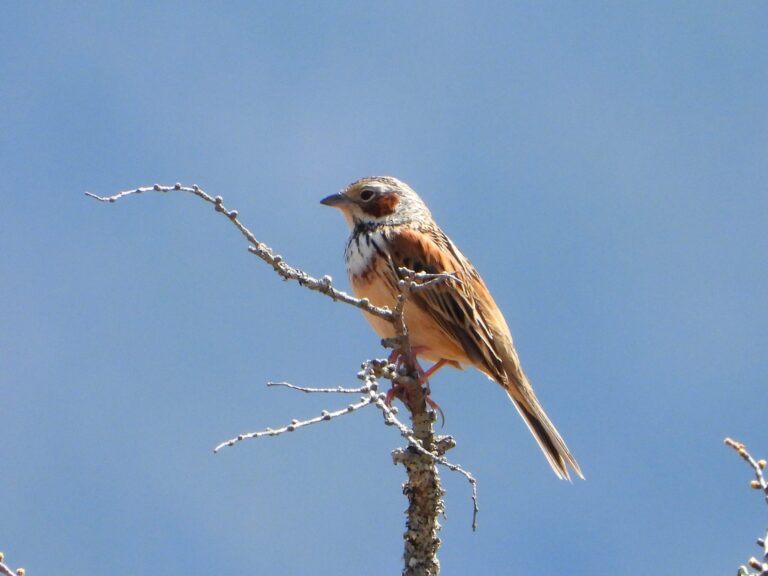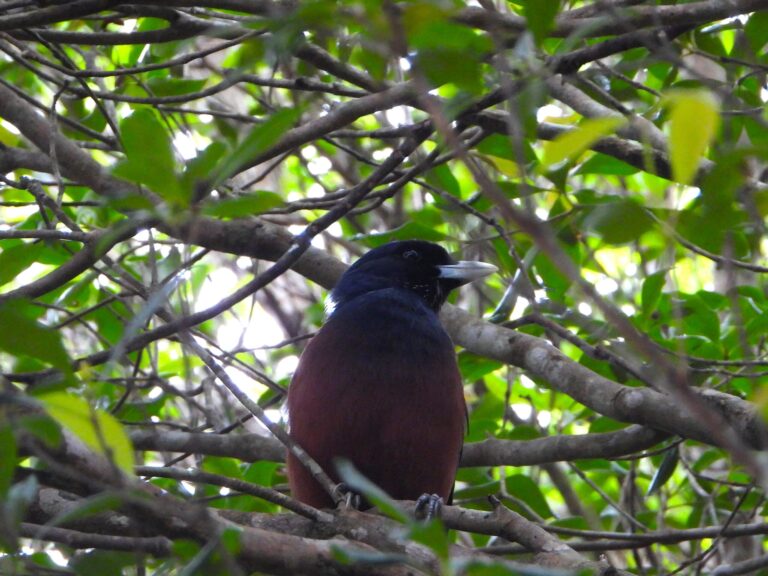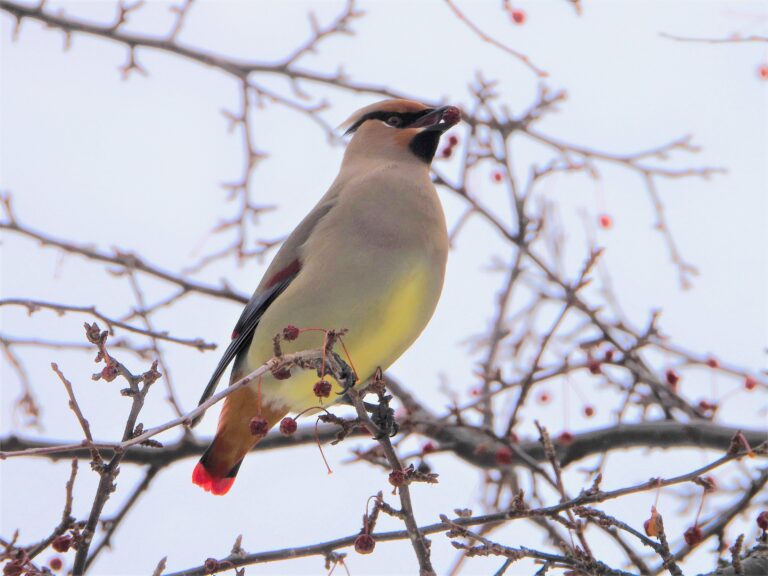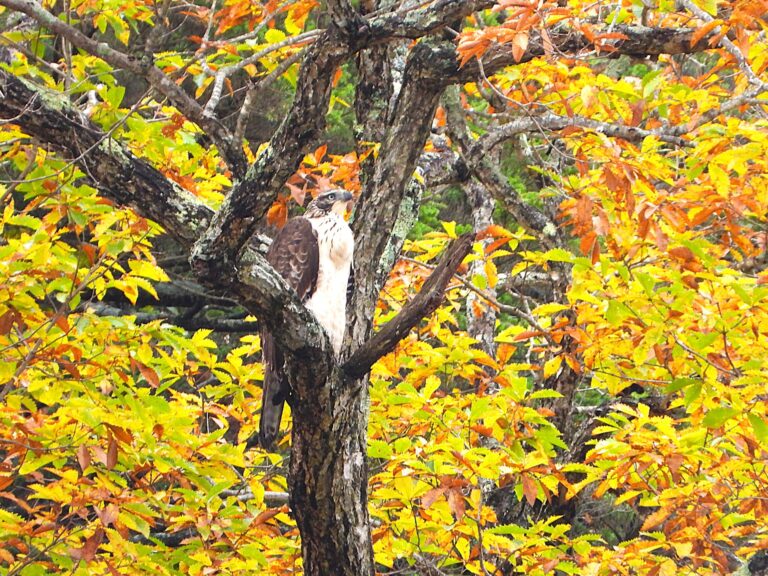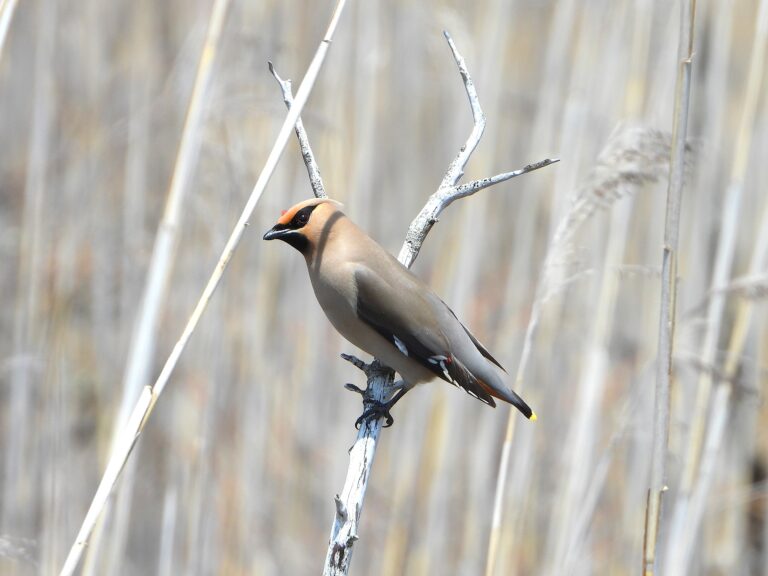Bull-headed Shrike (Lanius bucephalus) – Wildlife of Japan
Introduction
The Bull-headed Shrike is a compact, sharp-billed songbird famed for “impaling” prey on thorns or barbed wire—behavior that creates winter larders known in Japan as hayaniwa. Common across much of Japan’s open country, it’s a classic sentry on wires and hedges, announcing autumn with piercing calls.
Taxonomy & Names
Order Passeriformes; family Laniidae; genus Lanius. Japanese name: Mozu. Two widely recognized subspecies: L. b. bucephalus (Japan/East Asia) and L. b. sicarius (west-central China).
Appearance
About 19–20 cm long. Males show a bold black mask, brown crown, gray-brown back, and a noticeable white wing patch; underparts are whitish with fine barring and rufous flanks. Females are duller brown, lack the crisp white wing patch, and show stronger barring.
Habitat & Distribution
Prefers open habitats—farmland, woodland edges, river levees, parks, and gardens—where it hunts from prominent perches. Breeds across Japan from Hokkaido to Kyushu and occurs through Korea, northeast China, and the Russian Far East; northern populations shift south or downslope in winter. It is scarce in the Ryukyu Islands, though natural colonization of a few small islands (e.g., the Daito Islands and the Ogasawara/Bonin Islands) has been documented.
Where to See in Japan
Look for shrikes year-round across Honshu, Shikoku, and Kyushu in hedgerows, satoyama edges, and urban green spaces; in Hokkaido many birds are migratory and move south for winter. Classic viewing is a lone bird on a wire, shrub top, or other exposed perch scanning for prey.
Behavior
A sit-and-wait predator, it watches from exposed perches, then drops on prey. Territorial singing intensifies in autumn as birds establish winter territories; shrikes can also mimic other species. The species’ hallmark is caching prey by impaling—useful for storage and possibly in mate assessment.
Diet
Primarily large insects (grasshoppers, beetles, crickets), but also small vertebrates such as frogs and lizards, and occasionally small birds or rodents; prey are often impaled or wedged for later.
Reproduction
Breeding in Japan typically starts in late February in lowlands and continues into July, with highland breeders starting later. Nests are cup-shaped in shrubs, bamboo, or small trees. Typical clutches are 2–6 eggs; incubation lasts about 14–15 days, and fledging occurs roughly two weeks after hatching. Both parents provision young.
Conservation
Globally assessed as Least Concern, though the overall trend appears to be decreasing. In Japan it remains widespread, but some local jurisdictions (e.g., Tokyo) list the species on their Red Lists (Near Threatened). Habitat change in satoyama and farmland likely influences local abundance.
Author’s Impression
Few Japanese birds feel as “watchful” as a Bull-headed Shrike. It often perches in very visible spots to search for prey, scanning the surroundings with sharp focus. I often find one silhouetted on a wire above a rice field, calmly observing everything like a little sentinel. Spotting a hayaniwa impaled on a thorn is a reminder that this small bird is also a formidable hunter.
